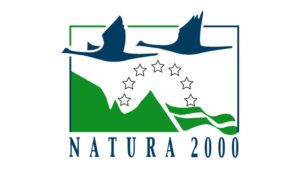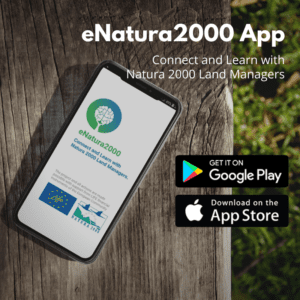Celebrate the European Natura 2000 Day!
Lemmenjoki National Park (FI) © Harri Tarvainen
On the 21st of May, let’s celebrate the Natura 2000 Day and remind ourselves the achievements, efforts and benefits brought by the Natura 2000 Network!
Happy Natura 2000 Day!
The Natura 2000 Day on May 21st aims to make European citizens more aware of the natural riches the Natura 2000 network holds, of the conservation work they carry out and of the benefits brought by the protected nature to people and to our planet. It has been celebrated since the 21st May 1992, when both EU Habitats Directive and LIFE programme were approved.
Together with the Birds Directive, which was adopted in 1979, the EU Habitats Directive became a base of EU Natura 2000 Network of Protected Areas. It is a network of sites designated by the individual countries, based on scientific criteria, to provide a network for effective nature protection across Europe.
The Natura 2000 network consists of Special Areas of Conservation, Special Protection Areas and Marine Protected Areas around Europe.
Today, Natura 2000 counts over 27 800 sites across EU‘s land and seas, and EUROPARC is proud to represent managers of about 40% of the current network. N2000 undoubtedly underpins EUROPARC’s strategy and is the focus of most of our activities, from the European strategies and policies to the ground and field management. Read about the joint efforts of EUROPARC and Natura 2000 here.
The European Natura 2000 Day was declared by the EU institutions to celebrate the network – one of the EU’s most outstanding achievements – and to honor the efforts of everyone involved in making it a success.
How to celebrate this Natura 2000 Day?

Are you wondering how you could possibly join the celebration? With N2000 vast coverage, that brings nature literally at our doorstep, it’s easy. If possible with respect to the current Covid restrictions, what about visiting a close by Natura 2000 site? You can also learn and discover the species and habitats it protects and share your experience online with #Natura2000Day and #Natura2000!
This year, the spotlight is on the proximity of Natura 2000 sites to people and on the benefits that nature brings to people and the planet, including those related to health. This is also a very important topic for EUROPARC and its programme Healthy Parks Healthy People Europe. To know more about the initiative connecting Protected Areas with the health sector, have a look at EUROPARC’s HPHPe Toolkit!
Download the eNatura2000 App!
If you cannot join the celebration in person this year, don’t worry. Learning about Natura 2000 and connecting with the sites managers and other nature professionals has never been so easy! With the eNatura2000 mobile app, all that is just a click away.
Get timely updates from the Natura 2000 world, read inspiring case studies, network and discuss with land managers across Europe. You can download the app on Google Play and App Store!
Read all about the app and the LIFEedu project that developed it!
TransParcNet 2021
The TransParcNet is the network of EUROPARC’s Transboundary Protected Areas. Every year there is a meeting for members of the network. This year, like in 2020, the meeting will be hosted by EUROPARC online on the 10th of June 09:00 – 16:00.
Transboundary Areas and the EU Green Deal
This TransParcNet meeting will look at the contribution TransBoundary Protected Areas can have to the EU Green Deal.
The European Green Deal is the plan to make the EU’s economy sustainable. We can do this by turning climate and environmental challenges into opportunities, and making the transition just and inclusive for all
Says the European Commission. So, what can this new approach offer the cross-border Protected Areas? And how can the EUROPARC Transboundary Areas contribute to this crucial objective for the entire European continent?
That are the questions that we look forward to answering! We will hear from the European Parliament, the European Commission (EC) and the European Committee of the Regions on their perspectives, initiatives, funds and programmes. Additionally, the EC will elaborate the technical note on the criteria and guidance for protected Areas designations and management.
You can find the entire agenda here
We very much look forward to a fruitful and enlightening exchange and discussion. You can register here.
Please note that the TransParcNet meeting is limited to certified EUROPARC Transboundary Areas only!
European Day of Parks Webinar – “Protected Areas for Climate Change adaptation, health and environmental education”.
On May 24th 12:00h CET, on the European Day of Parks 2021, EUROPARC Spain will organise a webinar in the framework of the ADAPTASALUDEA project, and in which they will present an overview on the current state of Protected Areas in Spain. Additionally, different examples of contributions to climate change adaptation, health and education will be presented. The webinar will be hosted entirely in Spanish language.
Webinar introduction
In the more than 100 years of history of Protected Areas in Europe, we have experienced crucial milestones: from the first national parks declared for their grandiosity and symbolism to the development of the Natura 2000 Network, where the majority of terrestrial and marine ecosystems are represented. In recent decades we have learned that nature conservation is essential to successfully respond to the impacts derived from climate change. We also know that Protected Areas are strategic places fin rural development policies. An appropriate management of Protected Areas not only contributes to improving the status of species and habitats, but also provides a great number of services to the society, visitors and inhabitants. The recent health crisis has made the human need and dependence on healthy spaces even more visible. The “new generation” of parks is called upon to face new global challenges that need local responses, with new approaches that enrich the progress made, with the incorporation of new generations of active, creative and committed people.
Webinar Programme
- 12:00 – 12:10: Welcome and introduction. Antonio López Lillo, Honorary President of EUROPARC-Spain.
- 12:10 – 12:30: Updates on the ADAPTASALUDEA project: Protected Areas in 2021. Marta Múgica, Carlota Martínez and Diego García. Fernando González Bernáldez Foundation, Technical Office of EUROPARC-Spain.
- 12:30 – 13.15: Table of experiences. Protected Areas: spaces for climate change adaptation, health and environmental education.
Moderator: Javier Valenzuela, Vice President of APIA, Communications Director of the Natural Heritage Foundation. Panellists:- Conchi Fagundo. Public use and ECST Technician at the Garajonay National Park, La Gomera, Canary Islands, Spain.
- Cati Carrillo. Socioeconomic dynamization and ECST responsible at the Regional Park of Sierra Espuña, Murcia region, Spain.
- Silvia Raya. Environmental educator of the Marjal de Pego-Oliva Natural Park, Valencia autonomous región, Spain.
- 13:15 – 13:45: Q&A / Discussion
- 13:45: closing remarks – Rafael Mata, President of EUROPARC Spain.
Next webinar: Atténuation du changement climatique – Gestion des espaces naturels protégés et séquestration de carbone
Next EUROPARC Webinar will take place on the 26th of May, 10:00 AM CET, on the topic of Climate change mitigation: Management of protected natural areas and carbon sequestration. The webinar will be held in French.
La Fédération EUROPARC, dans le cadre du projet LIFE Natur’Adapt, s’associe avec la Fédération des Parc naturels régionaux de France pour vous inviter à un webinaire à propos de l’opportunité pour les espaces naturels protégés de contribuer à l’atténuation du changement climatique par la séquestration de carbone.
- Atténuation du changement climatique: Gestion des espaces naturels protégés et séquestration de carbone
- 26 mai 2021 à 10h00 CET
- Gratuit – inscription nécessaire
Séquestration carbone à travers la filière bois local dans le Parc Gruyère Pays-d’Enhaut
Le Parc naturel régional Gruyère Pays-d’Enhaut met en œuvre plusieurs projets dans le domaine de la biodiversité ou du développement durable local qui contribuent significativement à la séquestration carbone. Vous découvrirez les actions au niveau de la filière bois, de l’exploitation durable des forêts à la promotion de la construction en bois massif local qui constituent un apport intéressant au niveau du stockage du carbone tout en contribuant à limiter les émissions de CO2.
Bruno Clément est chef de projets au Parc naturel régional Gruyère Pays-d’Enhaut en Suisse. Après un diplôme en géographie et une spécialisation en écologie, il a travaillé dans différents bureaux d’écologie appliquée avant d’œuvrer quinze ans dans la coopération au développement. Depuis 2014, il a rejoint l’équipe du Parc Gruyère Pays-d’Enhaut comme généraliste, avec des compétences à la fois dans les sciences naturelles et dans le développement régional et la sensibilisation. Il est actuellement responsable des projets paysage, filière du bois régionale et éducation à l’environnement.
Retenir l’eau dans les tourbières du Jura pour y stocker du Carbone
Dans cette présentation, vous découvrirez le lien entre tourbières et carbone dans le contexte jurassien ainsi que les perturbations observées et leurs conséquences et les actions du LIFE tourbières en 2 ou 3 exemples.
Pierre Durlet est géologue et écologue de formation universitaire. Il travaille au Parc naturel régional du Haut-Jura depuis 10 ans, après un premier poste au Parc naturel régional du Morvan.
Il est chargé de l’animation de sites Natura 2000 à forte composante tourbeuses et aquatiques et de la mise en œuvre du programme LIFE Tourbières du Jura depuis 2014. Il est également le co-animateur du site Ramsar Tourbières et lacs de la Montagne jurassienne qui a vu le jour en février 2021.
Inscrivez-vous ici !
Programme
10.00 Accueil et introduction
10.10 – Séquestration de carbone à travers la filière bois local dans le Parc Gruyère Pays-d’Enhaut
Bruno Clément, Chef de projets paysage, filière du bois régionale et éducation à l’environnement, Parc naturel régional Gruyère Pays-d’Enhaut, Suisse
10.30 – Retenir l’eau dans les tourbières du Jura pour y stocker du Carbone
Pierre Durlet, Chargé de mission milieux naturels, Parc naturel régional du Haut-Jura, France
10.50 Discussions
11.30 Fin
Le webinaire durera environ 1h 30min et sera organisé en français. Nous accueillons des participants de tout le réseau et au-delà.
Organisé par:

